Subjects:
- Preface
- Circular process
- Log ph chart
- Compare R134a with R1234yf
Preface:
The cooling process in a car's air conditioning uses changes in the state of a substance. During a change of state, such as the transition from liquid to vapor, the molecular structure of the substance changes, which requires heat. Heat is absorbed when liquid changes to vapor, and in the opposite case, when transitioning from vapor to liquid, heat is released.
If we look at the heat transfer to and from the environment, we see that during the evaporation process the environment cools, while heat is released and the environment warms up during condensation. This cooling of the environment occurs in the evaporator, while heating takes place in the condenser. This process repeats continuously, which is why it is known as a circular process.
On the “Air conditioning introduction” page, the cycle process with the various components of air conditioning is described in a practical manner. On this page we will delve further into this cycle process through the log pH diagram.
Recycling process:
Before we show a full log pH chart, let's start with the air conditioning cycle process. In this cycle process we use the diagram of the refrigerant R134a. In this diagram the areas for gas, gas-liquid and liquid are distinguished from each other. The critical point is at the top, at 101 degrees Celsius and a pressure of 40 bar. These are the maximum temperature and pressure at which the refrigerant is chemically stable. The heat content (enthalpy) is plotted against the pressure on the x-axis. Although we often refer to it as a “pH chart,” it is actually a “log-pH chart” because of the logarithmic scaling.
- At point 1 in the diagram the compressor starts, which draws refrigerant from the evaporator. The pressure is 2 bar;
- The gas is compressed from 1 to 2, increasing the pressure and heat content. The pressure and temperature rise to 15 bar and 70 degrees Celsius. The gas is overheated;
- Due to heat release in the condenser, the heat content decreases and therefore initially the temperature. The gas loses its superheat between points 2 and 3, causing the temperature to drop from 70 to 55 ° C.
- From point 3 to 4 there is heat release at a constant temperature. Here the gas is converted into liquid. The pressure remains constant;
- Further cooling causes the liquid to become slightly supercooled (from 4 to 5). The supercooled liquid under the high pressure of 15 bar reaches a constriction at point 5: the capillary or expansion valve. Here the high pressure is separated from the low pressure. From the compressor we can also say that the discharge pressure is separated from the suction pressure.
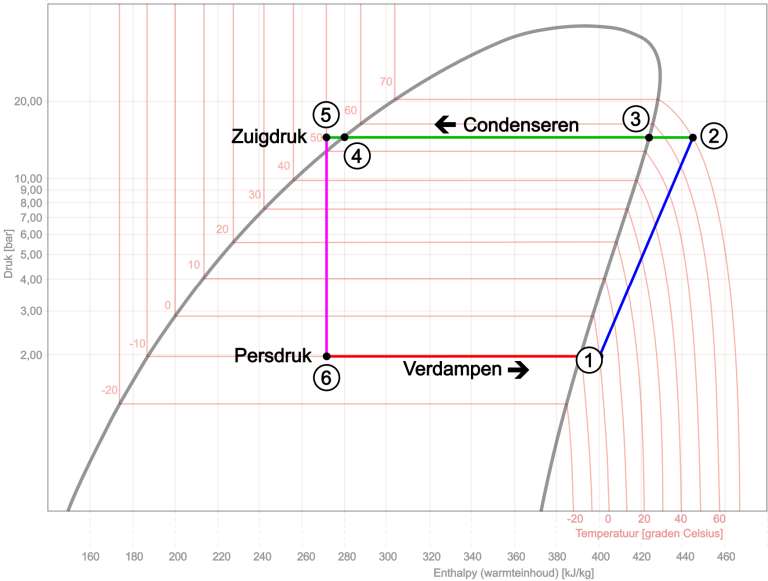
Due to the sudden drop in pressure in the constriction, the boiling point of the refrigerant in the liquid phase will decrease, causing spontaneous evaporation. The heat required for this is first extracted from the refrigerant itself and its surroundings. This remains the heat content is almost constant. Complete evaporation then takes place in the evaporator from point 6 to 1. The boiling temperature of the refrigerant drops between points 5 and 6 of 50° C to -10°C, eventually warming up to point 1 as a gas to 0°C. The heat content of the refrigerant increases, with the required heat being extracted from the environment, in this case the air passing through the evaporator. Pressure and temperature remain virtually constant. The refrigerant leaves the evaporator as vapor and is sucked in again by the compressor at point 1. The process repeats.
Log pH chart:
In the previous section, the log pH diagram was shown showing the cycle process (from evaporation to condensation of the refrigerant. The image below shows the condition of the refrigerant at a certain pressure in relation to the enthalpy (heat content), in which the cycling process is indicated by the dark blue line.
On the left side of the diagram is the fluid area. At low enthalpy the refrigerant is in liquid form. With increasing enthalpy the liquid line is reached. The slope of this line indicates the changes in pressure and enthalpy for the liquid phase.
In the center of the diagram is the saturated vapor zone. Here the refrigerant is in thermal equilibrium, with both liquid and vapor present.
On the right we see the saturated vapor line, which marks the limit at which the refrigerant has completely evaporated and is in a superheated vapor phase.
At the top of the diagram is the critical point, which marks the boundary between liquid and vapor. Here the distinction between the vapor and liquid phases disappears, leaving the refrigerant in a unique state. There is no clear transition between liquid and vapor.
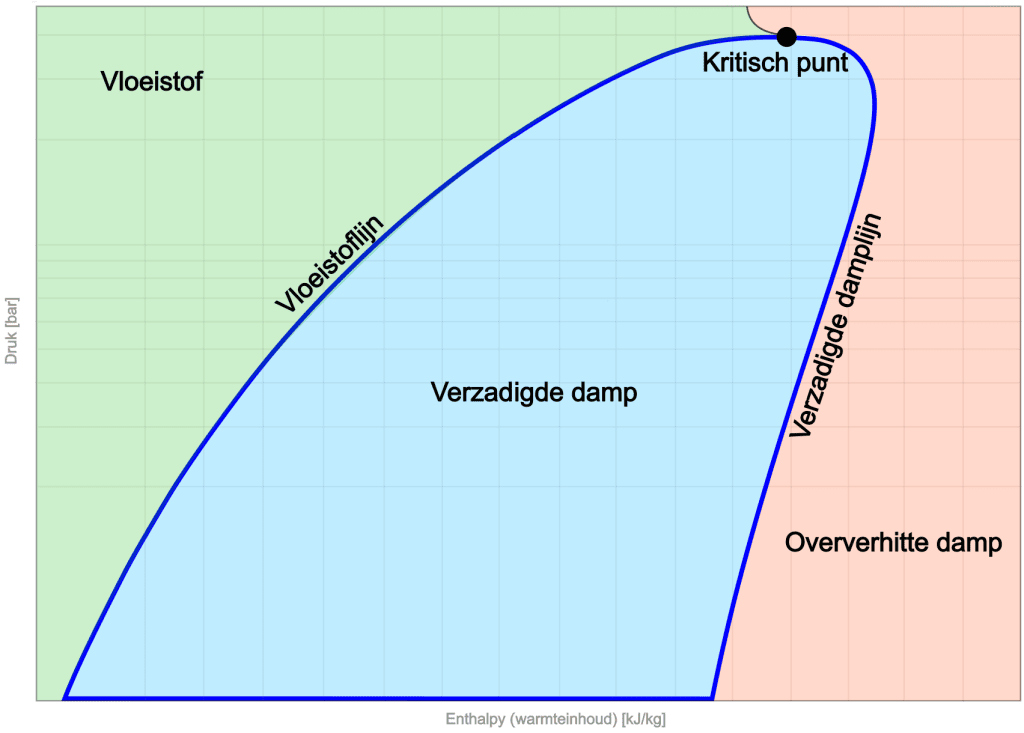
To provide more insight into the log-ph diagram, several curves are added to the diagram below: the isentropic, isothermal, isochoric and vapor quality. In the drawing below we once again see the circular process (colored gray) with the progression of the other processes. Here is a brief explanation of each state change:
Isentropic: the and isentropic line is characterized by constant entropy. This means that during a process along this line the refrigerant has no heat exchange with the environment and undergoes no entropy change. It is an efficient adiabatic (without heat exchange) process line in the diagram.
Isothermal: An isothermal line in the log-pH diagram represents a constant temperature process. During this process, the temperature of the refrigerant remains constant, which means that heat is supplied or removed to keep the pressure-enthalpy (ph) ratio constant.
Isochore: An isochoric line in the log-pH diagram represents a constant volume process. During this process, the specific volume of the refrigerant remains constant, meaning no change in volume occurs. This allows the line style to move up or down in the diagram depending on other changes such as pressure and enthalpy.
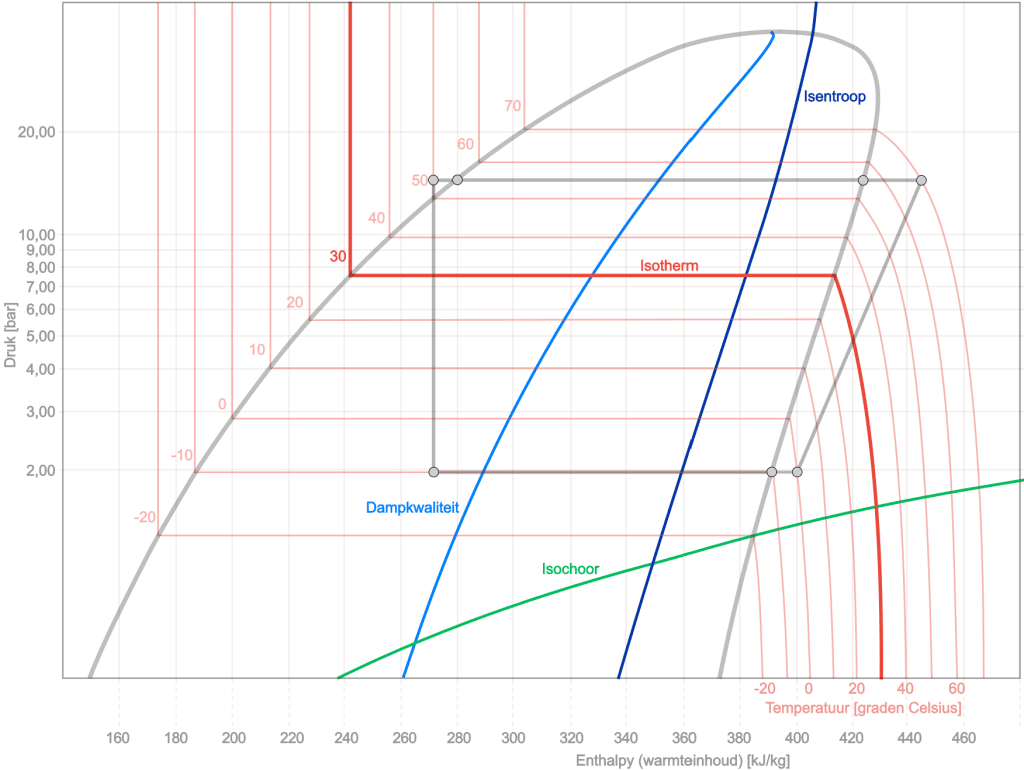
- Vapor quality: In a refrigerant log pH chart, the x-axis indicates the quality range, from “x=0” (completely liquid) to “x=1” (completely gaseous). Between these extremes, the refrigerant is in a two-phase state, with the x value indicating the ratio of gas to liquid. A line from “x=0,10” to “x=0,90” in the diagram indicates that the refrigerant is within this two-phase range, with the specific x value indicating the gas/liquid partition. This is crucial for understanding the behavior of the refrigerant in applications such as refrigeration and air conditioning systems.
In the image below we see a complete log pH diagram of the refrigerant R134a.
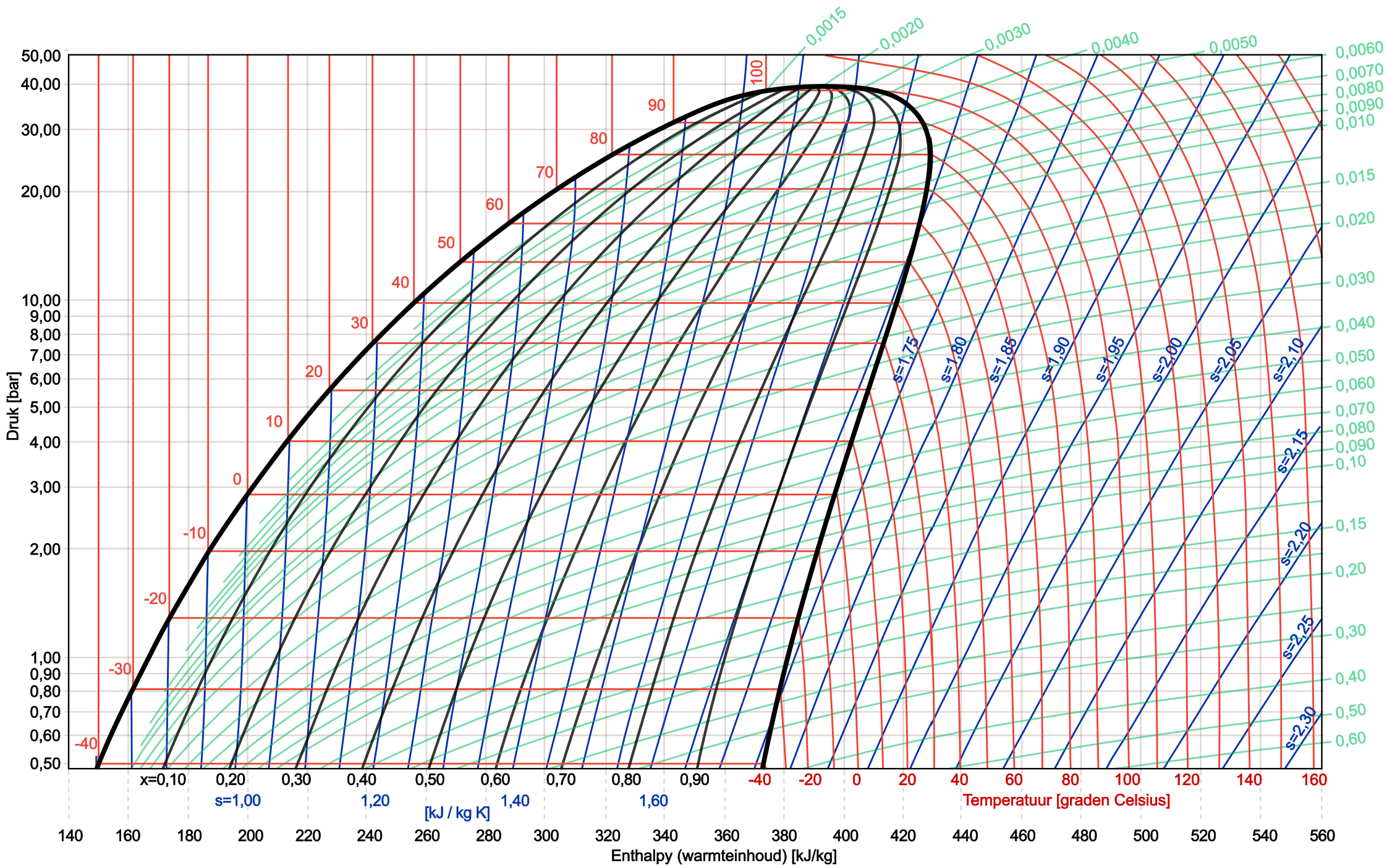
Compare R134a with R1234yf:
Using the log pH diagram, different types of refrigerants can be compared with each other. The following figure shows the log pH diagrams and cycling processes of R134a and R1234yf.
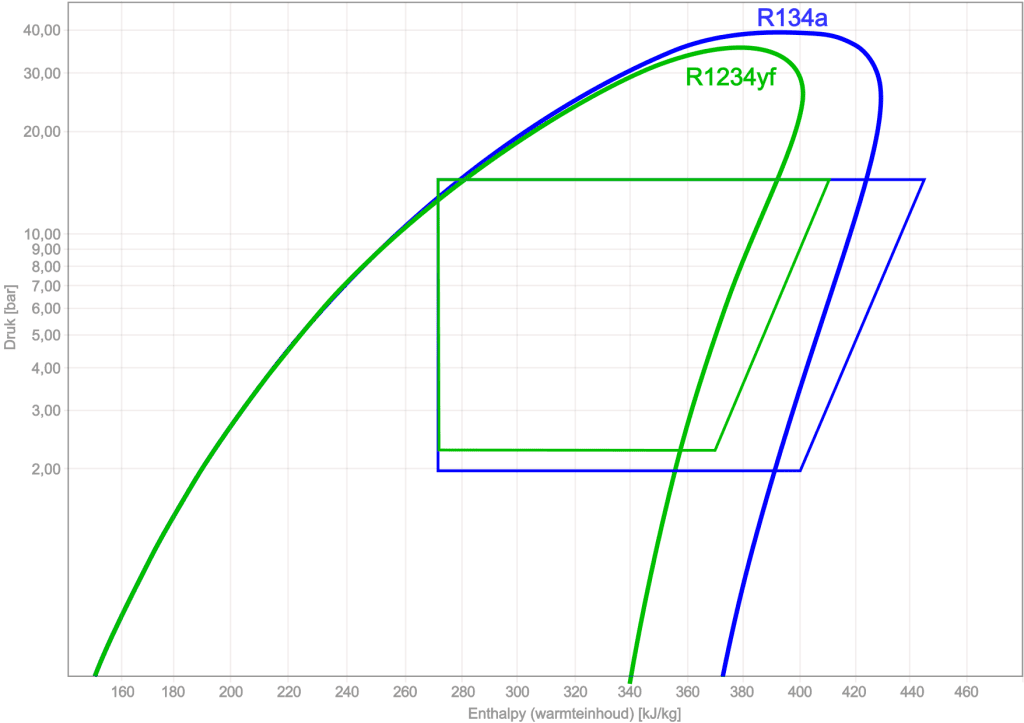
Related page:
